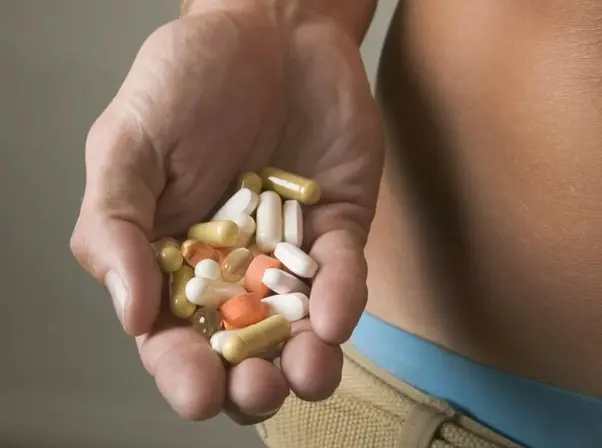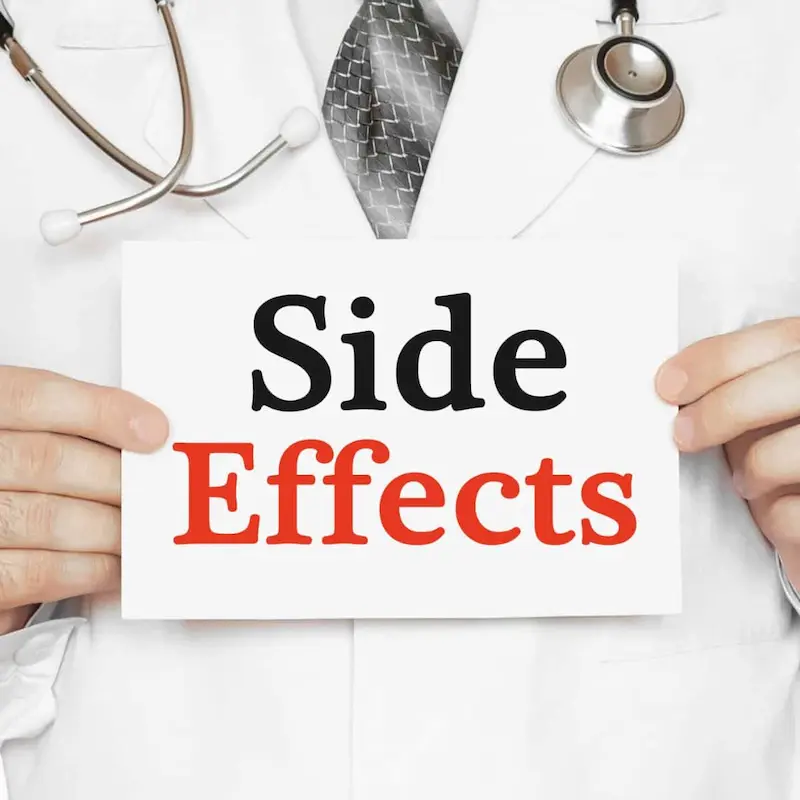S-23 is a potent investigational selective androgen receptor modulator (SARM) known for its unique ability to mimic the effects of anabolic steroids while aiming to minimize undesirable side effects. As a non-steroidal compound, S-23 binds to androgen receptors in the body, which is notably different from traditional steroids that tend to affect multiple hormone receptors. This specificity is designed to provide targeted outcomes, primarily in bone and muscle tissue, which is of considerable interest for medical research and bodybuilding communities.
Proper S-23 dosage is critical for individuals seeking to achieve their physical enhancement goals while also trying to maintain a safety profile. Although S-23 is still under investigation and lacks formal approval for clinical use, many athletes and bodybuilders report anecdotal dosage protocols that are circulated within the fitness community. These dosages, however, should be approached with caution, as the potential risks and fully understood effects of S-23 are not yet established through peer-reviewed clinical studies.
Quick Summary
- S-23 is an investigational SARM with potential muscle and bone tissue benefits.
- It’s important to adhere to appropriate S-23 dosages due to limited clinical approval.
- Proper use aims to minimize side effects while maximizing potential benefits.
S-23 and Selective Androgen Receptor Modulators (SARMS)

Selective Androgen Receptor Modulators, or SARMs, represent a class of therapeutic compounds with similar properties to anabolic agents, but with reduced androgenic properties. S-23, a potent SARM, showcases unique attributes and mechanisms, setting it apart from other compounds within its category.
Differentiating Between S-23 and Other SARMs
S-23 is distinguished from other SARMs by its higher binding affinity to androgen receptors and its more pronounced anabolic effects. Notably, its ability to function as a full agonist of androgen receptors sets it apart, potentially offering significant muscle and bone tissue benefits without the full spectrum of androgenic side effects typically associated with anabolic steroids.
Mechanism of Action on Androgen Receptors
S-23 exerts its function by selectively targeting androgen receptors in muscle and bone tissues. As a selective androgen receptor modulator, it is designed to mimic the effects of testosterone with improved selectivity, aiming to stimulate anabolic activities like muscle growth while minimizing androgenic effects, which are often linked to steroid use.
Potential as a Male Contraceptive
Research has indicated that S-23 may have potential as a male birth control, due to its capability to suppress spermatogenesis. By acting as a full agonist on androgen receptors within the testes, S-23 can reduce levels of luteinizing hormone (LH) and follicle-stimulating hormone (FSH), leading to a reversible decrease in sperm count.
Legal Status and FDA Approval
S-23, like other research chemicals in the SARM category, lacks approval from the Food and Drug Administration (FDA) for human use. Currently, it exists in a gray area where it is marketed as a research chemical; however, its legal status can vary by jurisdiction and can change as regulatory bodies continue to evaluate the safety and purpose of SARMs.
References
S-23 Dosage Guidelines

In designing a regimen with S-23, it’s crucial to consider the specific goals, understand the compound’s pharmacokinetics, and plan the cycle and post-cycle therapy (PCT) properly. Accurate dosing is key for maximizing benefits while minimizing potential risks.
Recommended Doses for Different Goals
For Bulking: To support muscle growth, bodybuilders may utilize S-23 in a bulking cycle. The doses typically range from 10 to 30 mg per day.
- Starter dose: 10 mg/day
- Intermediate dose: 20 mg/day
- Advanced dose: 30 mg/day for experienced users
For Cutting/Fat Loss: S-23 can be advantageous during cutting cycles. Common doses aim for a range of 10 to 20 mg daily.
Cycle Duration: Both bulking and cutting cycles with S-23 usually span 8 to 12 weeks.
Rest and PCT: Post-cycle therapy is essential after an S-23 cycle. Users should plan for a recovery period of at least 4 to 8 weeks for hormonal rebalance.
Understanding the Half-Life of S-23
S-23 has a half-life of approximately 12 hours. This informs users that dosing should occur twice daily to maintain stable blood levels of the compound. Timely dosing is critical for continuous receptor engagement and optimal results.
Importance of Cycle Timing and Duration
Cycle Length: Effective S-23 cycles last 8 to 12 weeks depending on the user’s goal and experience.
PCT Planning: After the cycle concludes, PCT is necessary to restore natural hormone levels. PCT typically starts 1 day after the last dose and continues for 4 to 8 weeks..
Synergistic Effects of Stacking S-23 with Other Compounds
Users often stack S-23 with other compounds like Ostarine, Cardarine, LGD-4033, or MK-677 to achieve specific targets. When stacking:
- S-23 + Ostarine: May be used for a mild bulking effect.
- S-23 + Cardarine: Can be effective for fat loss and endurance.
- S-23 + LGD-4033: Potentially enhances bulking phases.
- S-23 + MK-677: This combination might support both muscle gain and fat loss, given the growth hormone promoting the effects of MK-677.
Stacking requires careful dose adjustments to manage the synergistic effects without overburdening the body.
Benefits and Results of S-23 Use

When investigating the use of S-23, a Selective Androgen Receptor Modulator (SARM), it’s crucial to look at the empirically observed benefits and results, specifically in terms of muscle mass and strength gains, fat loss and changes in body composition, endurance and recovery related to training, and potential enhancements in bone mineral density.
Muscle Mass and Strength Gains
S-23 has been noted for its ability to foster significant increases in muscle mass and strength. In the context of bodybuilding and athletics, these gains are attributed to S-23’s ability to bind to androgen receptors, which stimulates muscle growth and strength gain. Athletes report a dramatic enhancement in lean muscle mass, often linked with rigorous training regimens.
- Muscle Mass: Studies suggest an increase in lean muscle mass.
- Strength: Reports indicate improved capability in lifting heavier weights.
Fat Loss and Body Composition Changes
The compound may contribute to fat loss through mechanisms like increased thermogenesis. Users often experience a more defined physique, as S-23 appears to facilitate the reduction of body fat while preserving lean muscle mass.
- Fat Loss: Evidence points towards enhanced fat loss alongside SARM use.
- Body Composition: Leaner body mass as a frequent outcome.
Endurance, Recovery, and Training Adaptations
Individuals using S-23 often observe improvements in endurance and energy levels. This, in turn, can lead to better recovery times post-exercise and the ability to withstand more intensive training sessions, which is pivotal for athletes looking to improve stamina and overall athletic performance.
- Endurance: Enhanced stamina during prolonged workouts.
- Recovery: Shorter recovery time between training sessions.
Enhancements in Bone Mineral Density
S-23 might also impact bone density, being beneficial for bone health. Improved bone mineral density is a potential result, making S-23 of interest for its possible therapeutic applications in preventing muscle wasting and osteoporosis.
- Bone Density: Possible increase in bone mineral density.
Side Effects and Risks of S-23

S-23 has been associated with a range of potential side effects and risks. These include testosterone suppression, hair loss, and effects on liver health, among others. It is important for users to be aware of these potential risks.
Testosterone Suppression and Post Cycle Therapy
S-23 can lead to testosterone suppression, necessitating post cycle therapy (PCT). Clinical evidence suggests that S-23 reduces endogenous testosterone production, which can result in hormonal imbalances. PCT protocols often include drugs like Clomid (clomiphene citrate) and Nolvadex (tamoxifen citrate) to aid recovery of natural testosterone levels.
- Testosterone Suppression: Significant decrease in testosterone levels.
- PCT Medications: Clomid and Nolvadex are commonly used to restore hormonal balance.
Potential for Hair Loss, Aggression, and Liver Toxicity
Users of S-23 may experience hair loss due to its androgenic effects. The risk of aggression and changes in behavior has also been reported. Moreover, there is a potential for liver toxicity, although data on this is limited.
- Hair Loss: Can be exacerbated, especially in predisposed individuals.
- Increased Aggression: Some report changes in mood and aggression.
- Liver Toxicity: Potential risk with long-term or high-dose use.
Impact on Libido and Fertility
S-23 may negatively affect libido and fertility, showing contraceptive qualities in some studies. It can lead to reduced sperm count and could potentially cause infertility.
- Libido: Possible decrease during usage.
- Fertility: May be adversely affected, though effects are typically reversible post-cycle.
Risk of Water Retention and Gynecomastia
There is a risk of water retention, which may mimic the appearance of fat gain. Furthermore, S-23 may contribute to the development of gynecomastia due to imbalances in estrogen levels if not properly managed.
- Water Retention: Could obscure muscle definition.
- Gynecomastia: Develops when estrogen levels are unregulated.
Long-Term Safety and Unknown Adverse Effects
The long-term safety profile of S-23 remains largely unknown, with clinical studies still limited. There is a concern for unforeseen adverse effects that may manifest with prolonged use of S-23.
- Unknown Adverse Effects: Lack of comprehensive long-term safety data.
- Clinical Studies: Limited, which hampers understanding of the full range of potential side effects.
References
- Clinical Utility of SARMs: Designing Molecules That Are Effective as Therapeutics for Androgen Deficiency or Modulation of Androgen Receptor Function: https://www.ncbi.nlm.nih.gov/pmc/articles/PMC2072877/
- The selective androgen receptor modulator S-23 is a potent androgenic compound that reduces prostate size and increases muscle mass in intact male rats: https://pubmed.ncbi.nlm.nih.gov/29277778/
Practical Considerations for Athletes and Bodybuilders

Athletes and bodybuilders seeking to utilize S-23 must be cognizant of its integration into their regimen, adherence to dietary and training protocols, management of post cycle therapy, and compliance with legal and antidoping standards.
Incorporating S-23 into Bulking and Cutting Cycles
Bodybuilders often cycle S-23 during bulking to gain muscle mass or during cutting cycles to maintain muscle while reducing fat. For bulking, they might start with a lower dosage and incrementally increase it. During cutting cycles, a consistent dose throughout the cycle is typical to preserve lean muscle mass. It is crucial to align the cycle duration with the individual’s specific bodybuilding goals.
- Bulking Cycle: Begin with 5 mg/day, gradually increase to 10-20 mg/day.
- Cutting Cycle: Maintain a steady dose of 10-20 mg/day.
Diet and Training Regimens to Maximize Efficacy
To maximize the efficacy of S-23, athletes should tailor their diet to their cycle objectives. A protein-rich diet with adequate calories is essential during bulking, while a caloric deficit with sufficient protein intake is crucial for cutting. Training regimens should include a combination of resistance training and cardiovascular exercises.
- Bulking Diet: High protein (~2g per kg body weight), caloric surplus.
- Cutting Diet: High protein (~2.5g per kg body weight), caloric deficit.
Guidance on Post Cycle Therapy and Recovery
After completing an S-23 cycle, bodybuilders must engage in post cycle therapy (PCT) to facilitate recovery and hormone normalization. A typical PCT might involve SERMs such as Tamoxifen or Clomiphene and may last 4-6 weeks. Monitoring hormone levels and consulting with a health professional is paramount during this phase.
- PCT Protocol:
- Weeks 1-2: Tamoxifen 20 mg/day
- Weeks 3-4: Tamoxifen 10 mg/day
- Optional Weeks 5-6: Clomiphene 25 mg/day
Navigating Legal and Doping Regulations
Athletes must understand that S-23 is prohibited by the World Anti-Doping Agency (WADA) due to its performance-enhancing effects. It is classified as a non-Specified Substance in the class of Other Anabolic Agents under the WADA Prohibited List. Compliance with doping regulations is crucial to avoid sanctions.
- WADA Status: S-23 is a prohibited substance
- Legal Considerations: Verify the substance’s status within an athlete’s jurisdiction
Frequently Asked Questions

S-23 is recognized for its potential in building lean body mass and promoting fat loss. This section answers the most common queries related to its usage, effects, comparisons, personal experiences, cost, and regulatory status.
What are the recommended dosages for S-23 to achieve optimal results?
The suggested dosage of S-23 for optimal results varies, but it typically ranges between 10 to 30 mg per day. It is important that users start with a lower dosage to assess tolerance and gradually increase it under the guidance of a health professional.
What benefits can one expect from using S-23, and are there any potential side effects?
Users of S-23 may experience increased muscle mass, fat loss, and enhanced bone density. Potential side effects can include testosterone suppression, so a post cycle therapy may be advisable. The full extent of side effects is not completely understood due to the lack of extensive clinical studies.
How does the efficacy of S-23 compare to other popular SARMs like RAD140?
S-23 is often noted for its strong anabolic effect, which may be more pronounced than that of other SARMs like RAD140. However, S-23 might also have a higher propensity for side effects, and its use requires careful monitoring.
Can you provide before and after scenarios from individuals who have used S-23?
Individual reports often describe significant lean muscle gains and fat reduction after using S-23. It is imperative to consider that these outcomes can vary widely and are influenced by several factors including diet, exercise, and the user’s initial body composition.
What is the average cost of S-23, and does it vary significantly by supplier?
The cost of S-23 can range from $30 to $50 for a month’s supply, depending on the supplier and the product’s concentration. Prices may fluctuate based on source, purity, and formulation of the compound.
What should users know about the safety and legal status of S-23 supplementation?
S-23 is not approved by the FDA for human use and is legally sold as a research chemical. Its safety profile is not fully established, and its legal status may vary by region, so individuals should consult with relevant authorities to ensure compliance with local regulations.
Dr. Grant Fourie, a specialist in male hormones, is based in Cape Town, South Africa. He provides comprehensive treatments for conditions related to low testosterone, such as erectile dysfunction, fatigue, and mood changes. His methods include hormone replacement therapy and other modern treatment options.
Contact me via email or phone to book personal appointment in my clinic: The Village Square, Cape Town - South Africa



